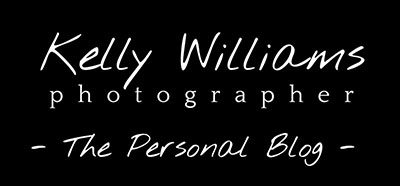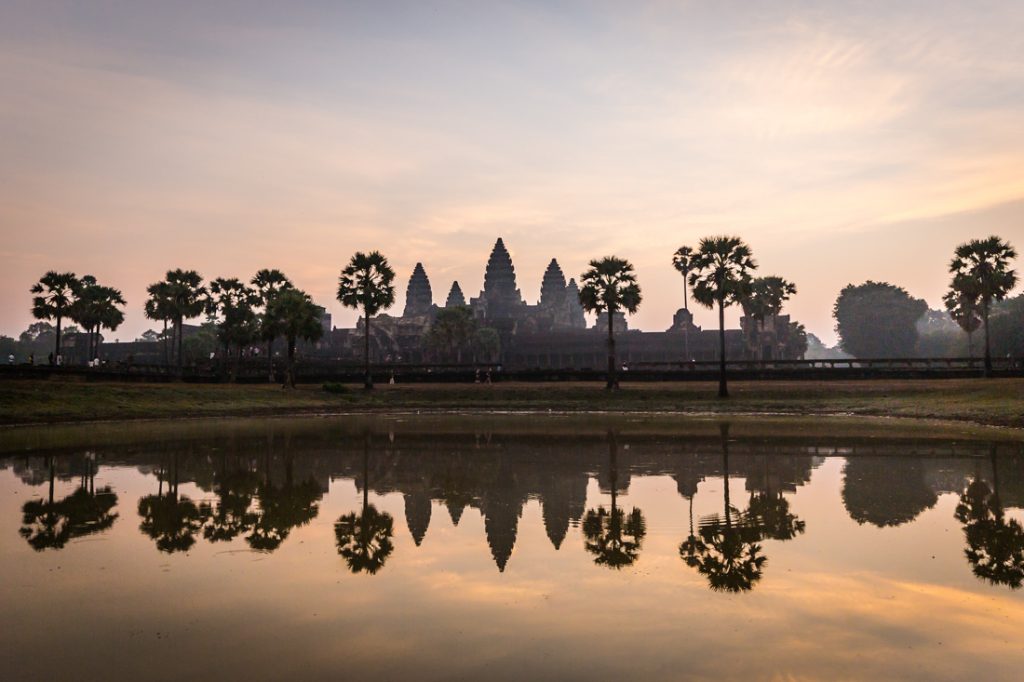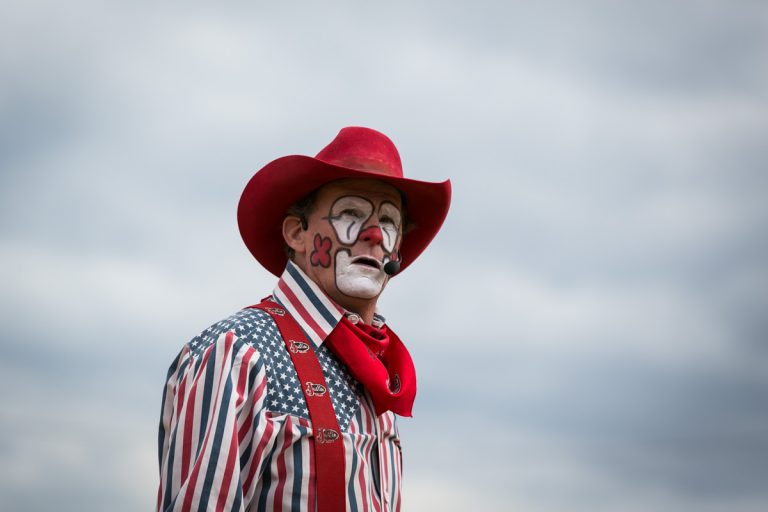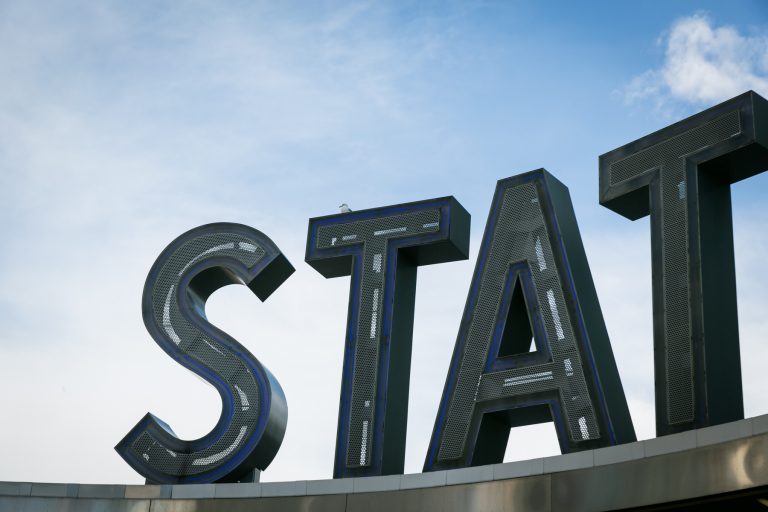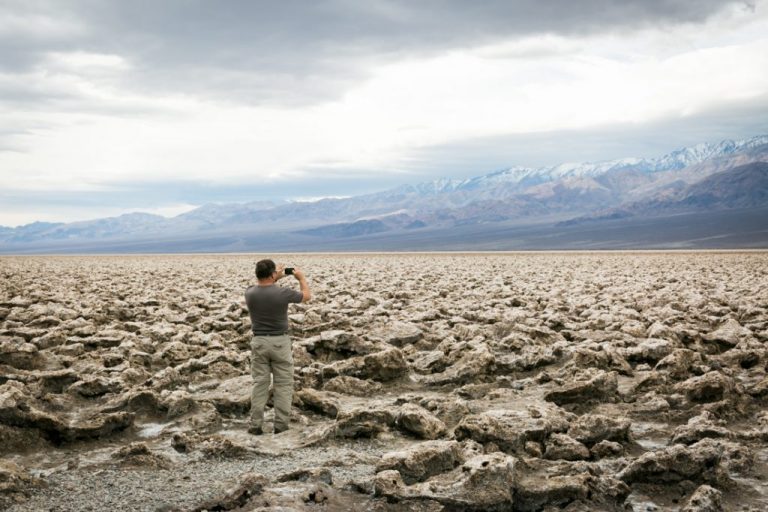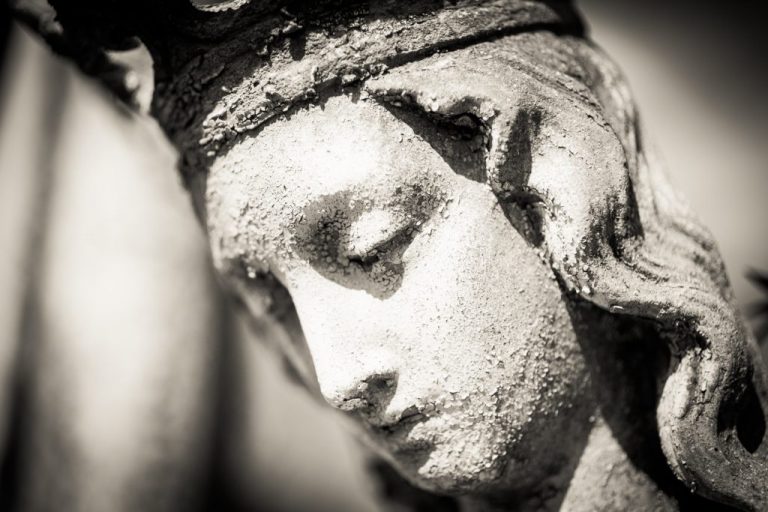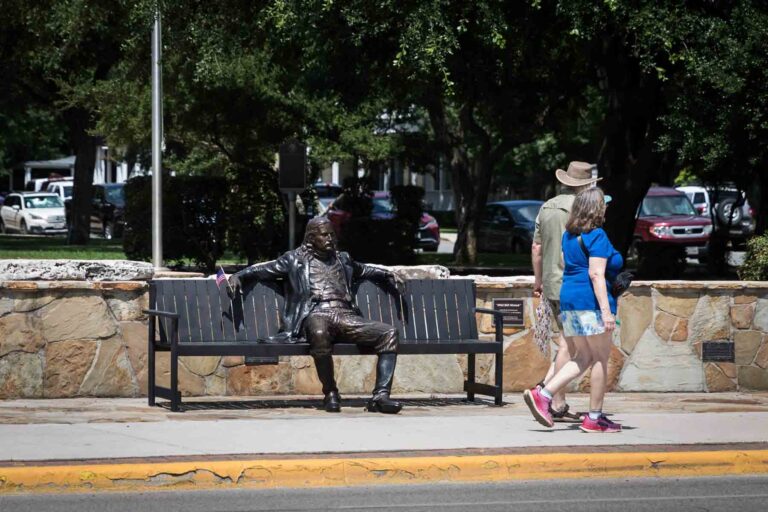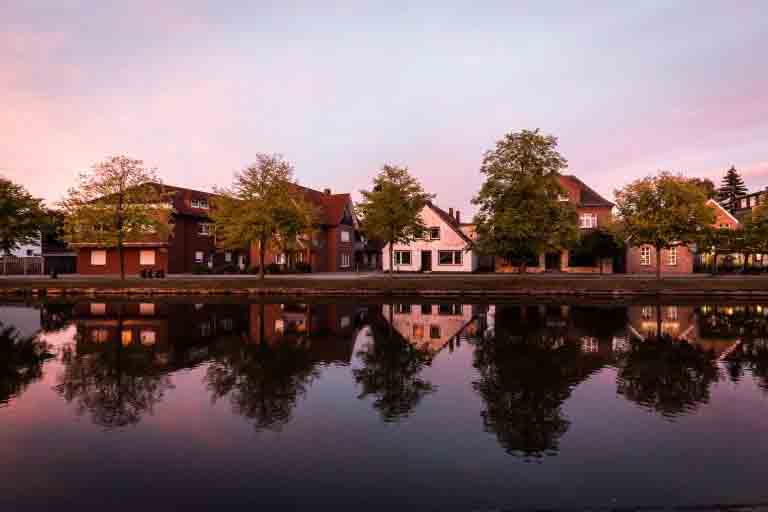Angkor Wat Temple Guide
An Assessment of Each Angkor Wat Temple
from a Photographer’s Perspective
If you have a Tomb Raider-style photography adventure to Cambodia in your future, then this Angkor Wat temple guide will come in handy. In February I spent a week in Siem Reap visiting virtually every temple in the Angkor Wat complex. I visited most of the temples multiple times, and came back with some tips on when to go and how to get the best photos. From my lips to your ears, here are my temple-by-temple recommendations for photographing Angkor Wat.
Angkor Wat

Angkor Wat is the first stop for most photographers, and rightly so. Sunrise at Angkor Wat can be tricky because of the hordes of tourists who make this think of this temple as a ‘must see’ experience. I’ll post a separate blog article on sunrise strategies for Angkor Wat and beyond, but just know that if you are planning to photograph Angkor Wat at sunrise, then you need to arrive at the temple by 6:00 a.m. at the latest.
Once you get past sunrise, however, the challenge of photographing Angkor Wat becomes much less daunting. By 7:30 a.m. the crowds dissipate by half. Most tourists come just for sunrise, and their tuk tuks then take them back to their fancy hotels for breakfast after the sun has risen. This is when you, the photographer, should pounce. Rest assured the masses will come return later in the day, but for now you should use the time to explore. The light at Angkor Wat is beautiful early in the morning, though expect the haze of pollution to cause significant clarity issues.
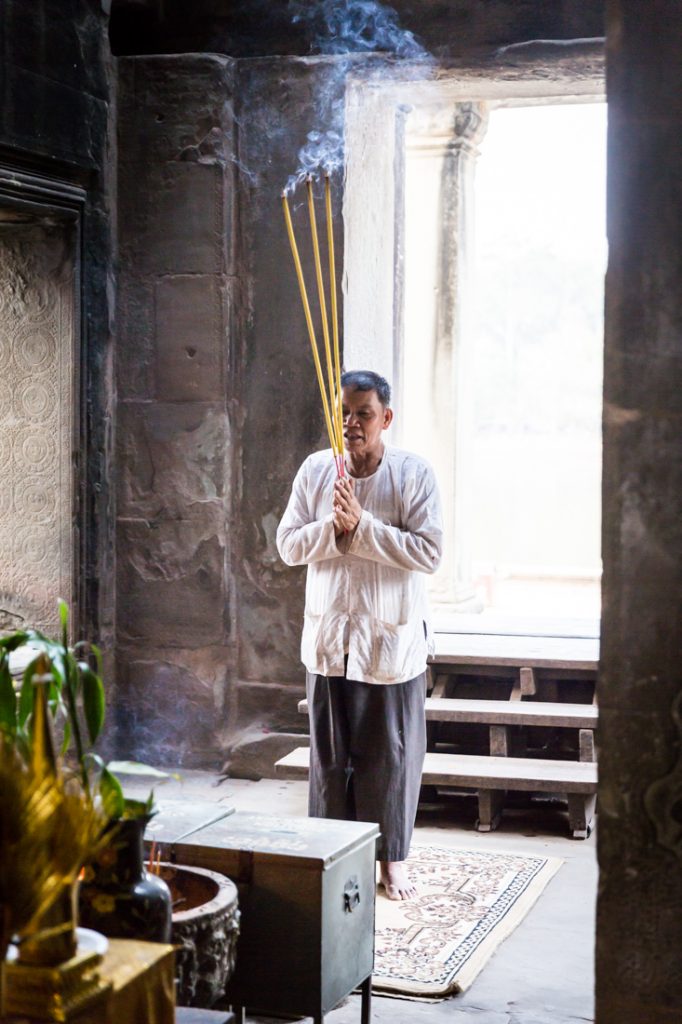
During my week in Siem Reap I visited Angkor Wat three times, and each time came away with great photos. Because the complex is so large, certain parts of the temple work better at sunrise, while other sections look best at sunset. Whenever you visit, check for magical light beams streaming in through the windows.
While the most noteworthy shots you will take of Angkor Wat are of the main temple at sunrise or sunset, I found Angkor Wat to also be a fantastic source for detail shots. There are wall carvings, solitary Buddha statues, and light streaming in through windows that beg to be photographed. There are also plenty of monk sightings. And while you are technically not supposed to photograph monks without asking them — and I would never recommend you make an monk angry — the spark of color from an orange robe looks great against the dark temple walls.
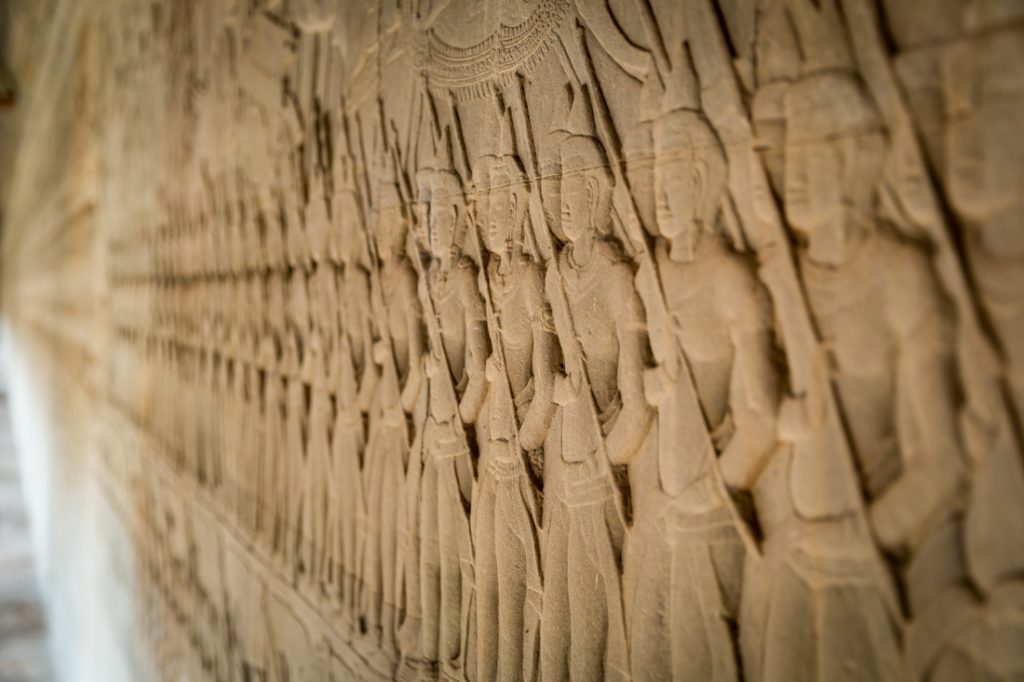
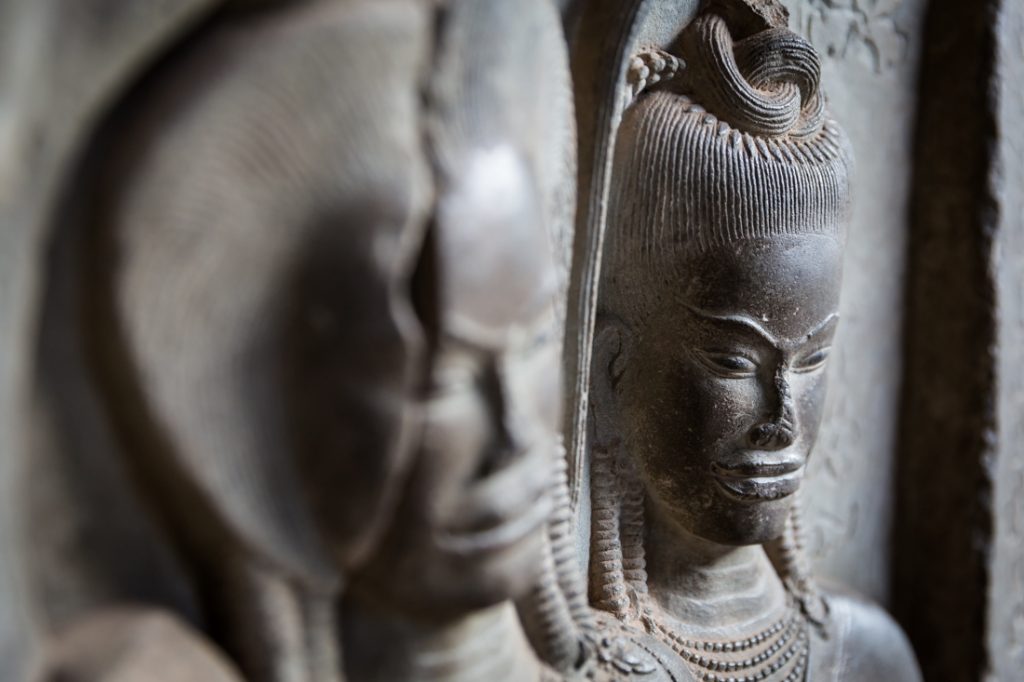
In addition to the temple itself, take the road less traveled and photograph areas surrounding the temple. Some of my favorite and most interesting photos were taken outside of the temple. To the right of the temple is what (I think) is a school for young monks. I, of course, don’t speak a word of Cambodian, but by just a kind smile and a bow here and there I was able to photograph a group of women and children who were preparing a young boy for a ceremony. These people were so kind to let me take their photos, and they seemed thrilled to be the center of my camera’s attention. It was such a sweet moment of mystery and it made the 48 hour-long plane ride to Cambodia worth it.

Continuing the tour around Angkor Wat, there is an adult monastery with lots of stupas on the other side of the main temple. And if you walk behind Angkor Wat, you will find a large lake. The lake is somewhat scenic, but most importantly, there are monkeys. Lots and lots of monkeys. If you keep walking around the lake back towards the front entrance of Angkor Wat, you will pass a few rural households, including one with a few cows in the front yard.
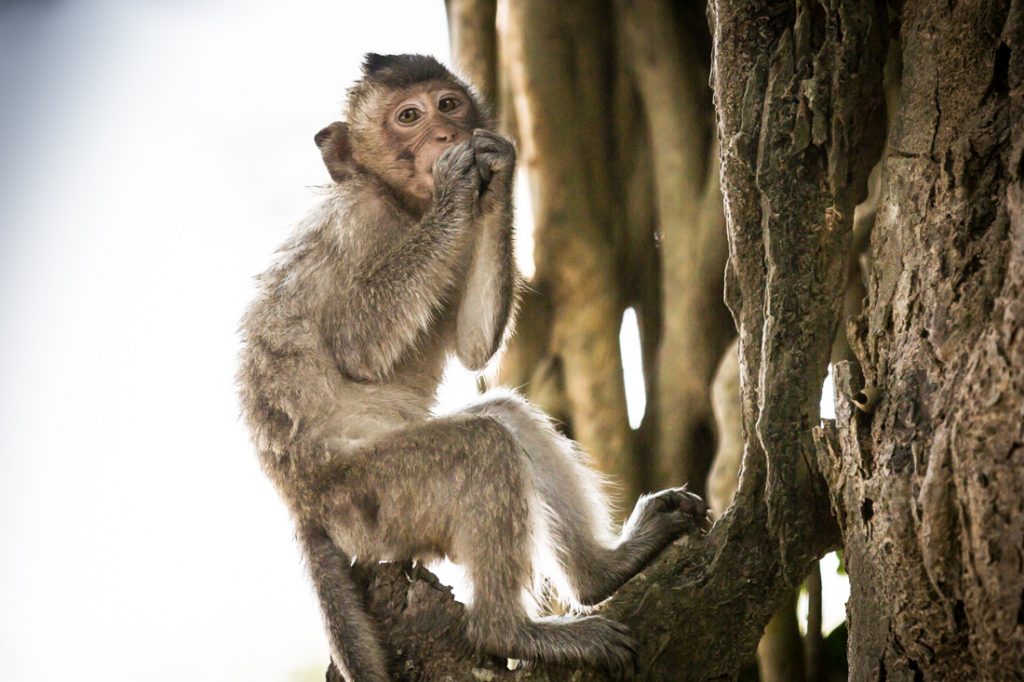
Finally, I found it fascinating to photograph the behind-the-scenes action in all of the temples. The staff that maintain the temples were all happy to be photographed, and I think they tell a story in and of themselves.
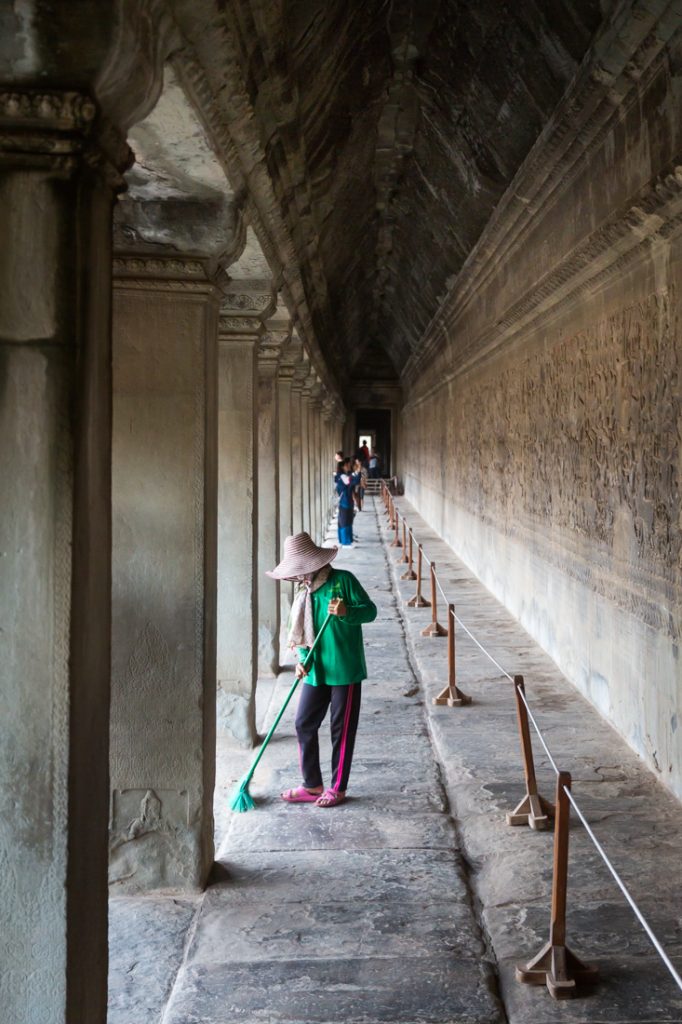
Angkor Wat
- Hours of operation: 5:00 a.m. to 5:30 p.m.
- Best time to visit: sunrise, sunset; avoid midday
- Amount of time to photograph: one full day total
- Special things to photograph: wall carvings, Buddha statues, surrounding lake and monastery
West Mebon
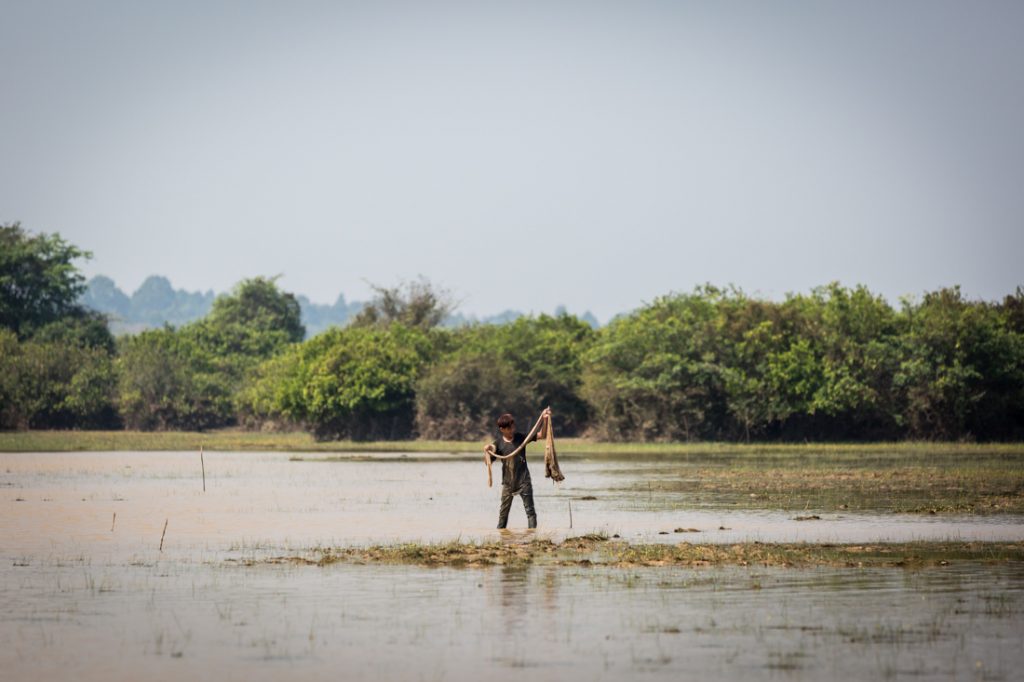
Is this temple even worth your time? Probably not. When you look on Google maps and you do a Google picture search, it looks like there is s speck of a temple in the middle of a lake. Sounds photogenic, right? Not so much. The reality is that if you go during the dry season, there’s not enough water in the lake to make it worth your time. Also, I couldn’t figure out how to get there. I walked – yes, I walked – there from Angkor Wat. On the upside, I saw more of Cambodia life in the countryside then I ever would have if I had just stayed within the temple walls. But at the end of my walk when I arrived on the edge of West Baray Lake I could not even find the temple. I walked off the map, so to speak, and could not find an entrance to get there by foot. What I did find were some fishermen, who were curious about the lone Western woman. It was a long, dusty walk and I don’t regret it in the slightest, but let me save you some time and say don’t bother with a visit.


West Mebon
- Hours of operation: 5:00 a.m. to 5:30 p.m.
- Best time to visit: don’t waste a visit here unless you are going in the rainy season
- Amount of time to photograph: zero
- Special things to photograph: fishermen
Phnom Bakheng

This is the temple where I was left at the altar, as they say, by my tuk tuk driver (read about my tuk tuk driver challenges in my Siem Reap travel tips). But this was also the temple where I photographed the best sunrise of my entire trip to Siem Reap. Phnom Bakheng is known for a fantastic view of Angkor Wat in the distance. The morning I visited Phnom Bakheng definitely had the best clouds overhead, but there so much smog in the air that you could not see Angkor Wat clearly. Further obstructing the view was the scaffolding of nearby construction crews. You have been warned that the entire Angkor Wat complex is getting a makeover.

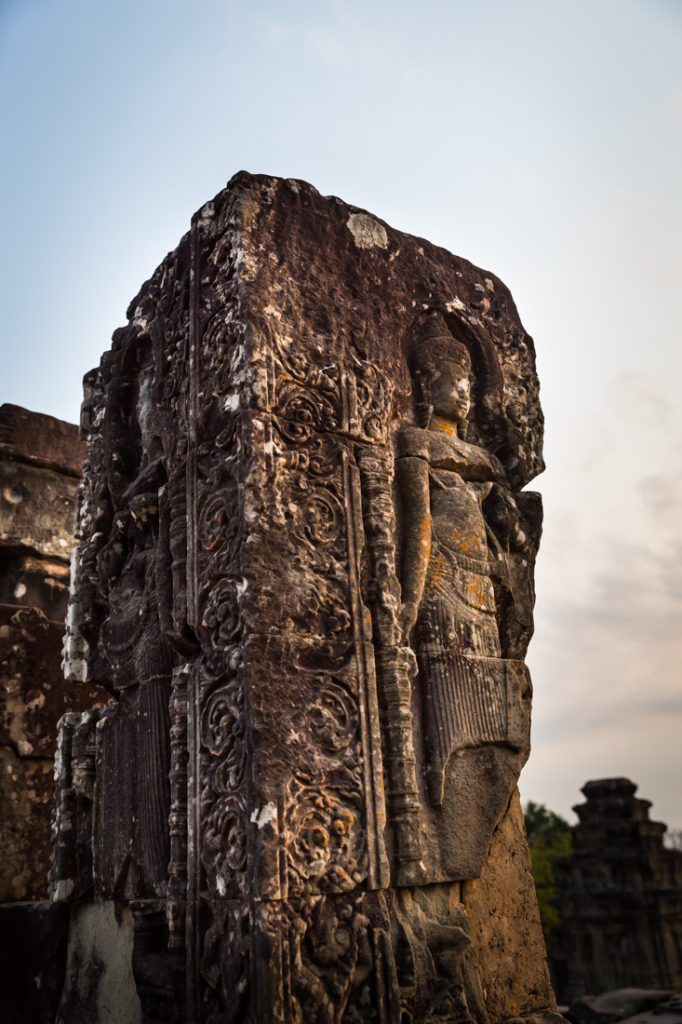
I found my most intriguing photos were those using the structures at the top of Phnom Bakheng to capture the sunrise. It is a relatively small temple, so once you get your sunrise shots you’re done. There are some interesting relief sculptures for detail shots, but this temple shouldn’t take you more than an hour to photograph, and that’s including the time it will take you to hike to the temple. I found the walk to be fairly easy. Note, you’ll need to arrive very early. Once the sun gets high enough, Phnom Bakheng becomes a sun-baked wasteland.
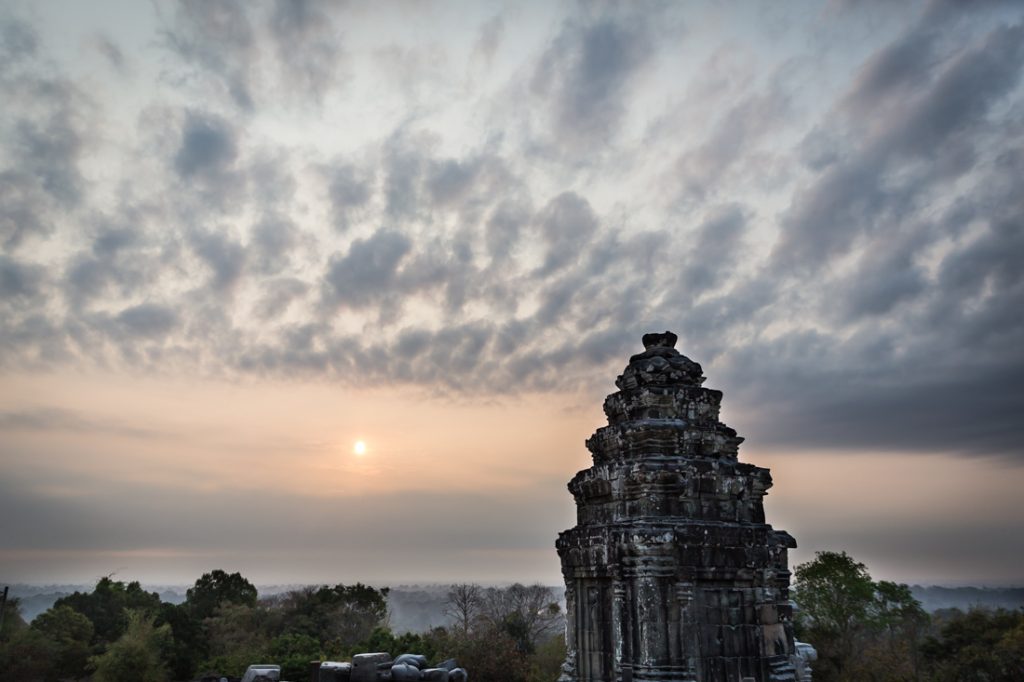
Finally, there is an elephant walk off to the side for tourists who want to ride to the top of the temple. Please, for the sake of the elephants, do not ever — either in Cambodia or elsewhere — ride an elephant. The caretakers do not take very good care of the animals and weight from the saddles and constant stream of tourists hurts the elephants. If you would like to interact with one of these gentle giants, I recommend the Elephant Nature Park in Siem Reap (and Chiang Mai).
Phnom Bakheng
- Hours of operation: 5:00 a.m. to 7:00 p.m.
- Best time to visit: sunrise
- Amount of time to photograph: 1 hour
- Special things to photograph: sun rising through the ruins
Angkor Thom

Angkor Thom was by far one of the best sources for detail shots on my entire trip throughout Southeast Asia. On my first trip to Angkor Thom, I focused on the Bayon Temple and completely missed the Terrace of the Elephants as well as all of the surrounding temples. Most visitors focus on the main temple with the faces carved in the wall, but neglect the rest of the surrounding complex. There are lots to discover behind the main temple, however, and you should spend plenty of time here.
You will no doubt enter the Angkor Thom temple complex through the South Gate. This is the most popular gate. Tuk tuks drive through at breakneck speeds and pay no heed to photographers, so be careful you don’t get run over. Each face on the gate sculptures is unique, so take your time photographing each one. Additionally, take the time to notice what is going on in the moat beneath you. While I was there there were workers removing overgrown plants. Backlit against the sun, their boat framed a beautiful moment.
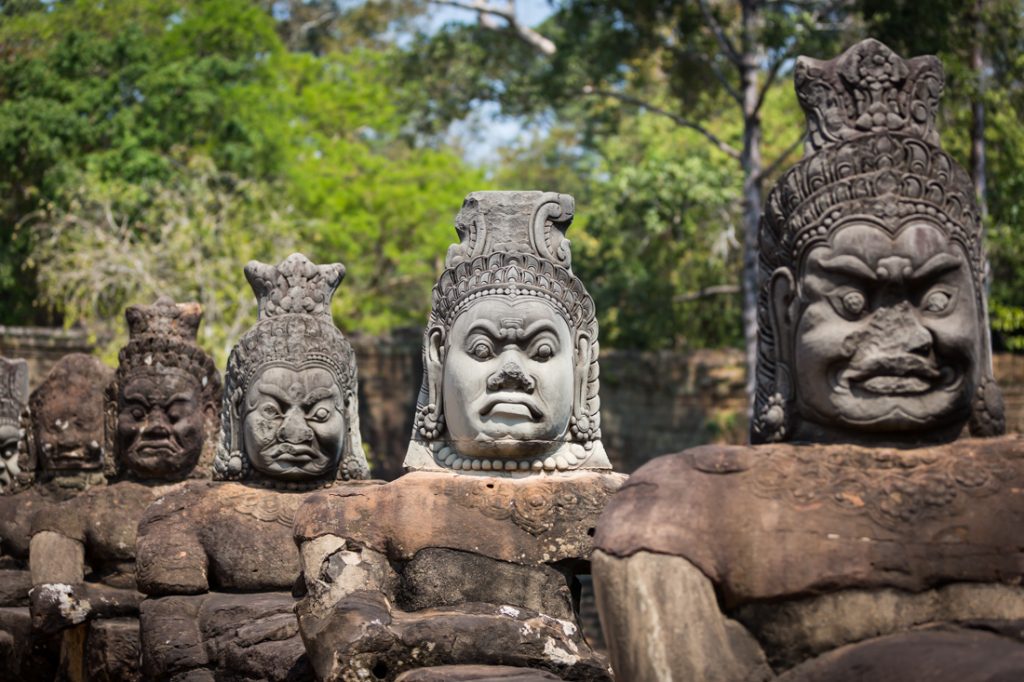
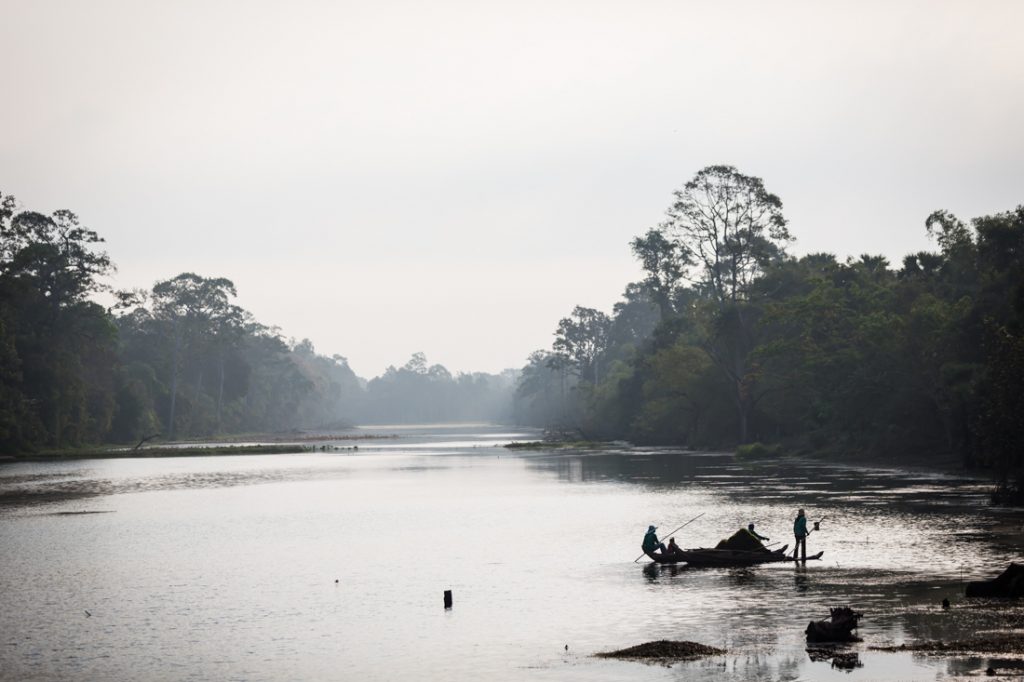
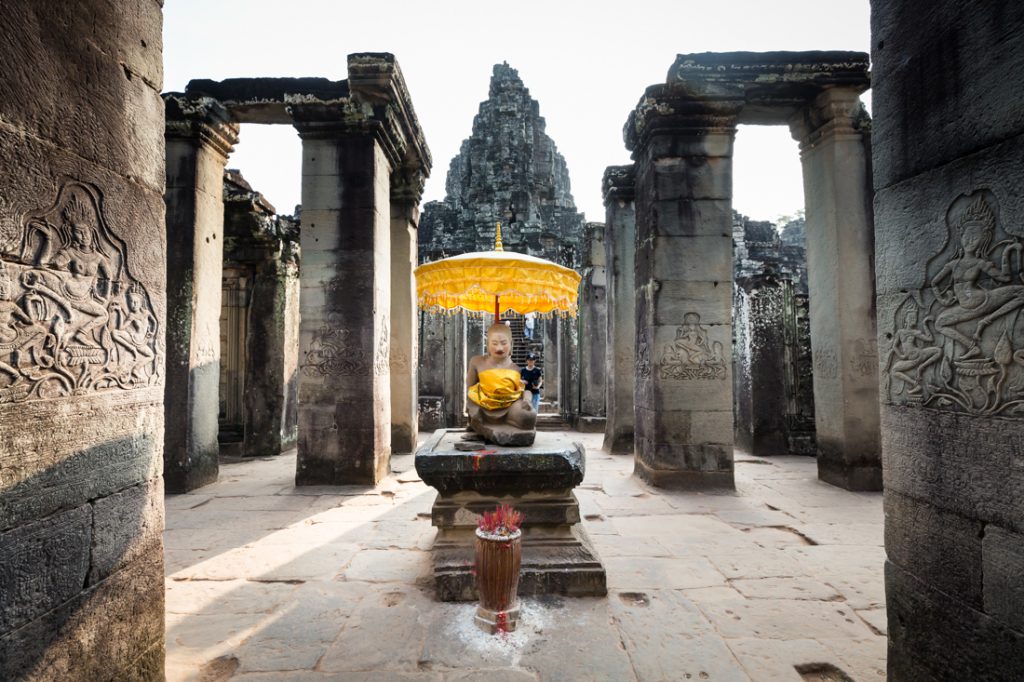
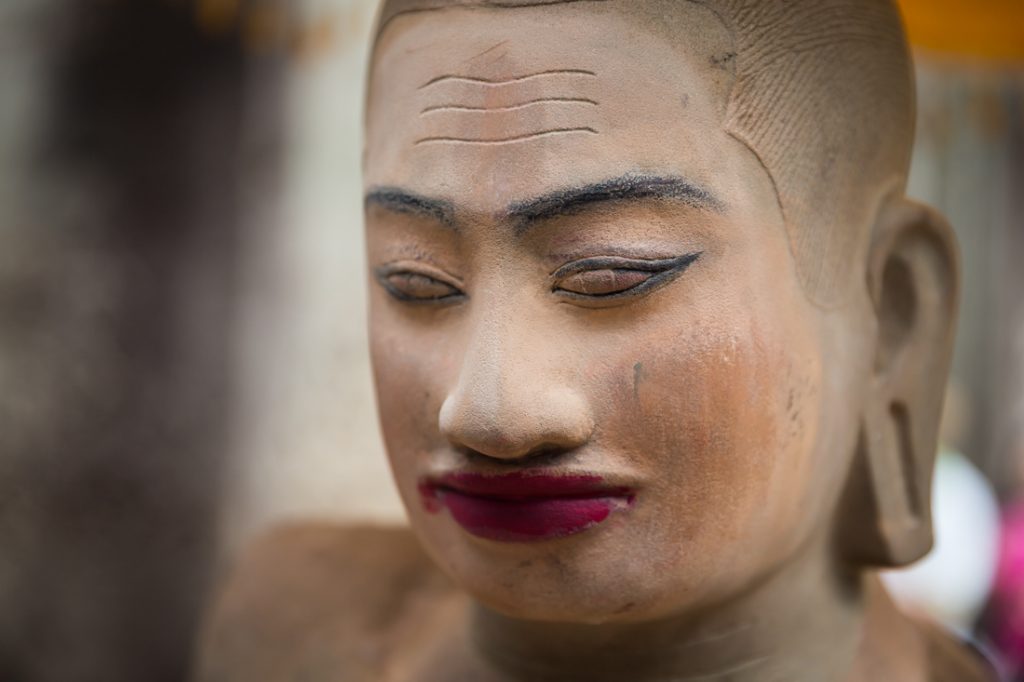
My recommendation is that you spend sunrise at the Bayon Temple and photograph the warm light as it starts to hit the temple faces. Enter Bayon through the west entrance and take photos of the makeup-laden Buddha statue before the packs of tourists descend upon you. This is the entrance used by most of the tour groups, so if you want photos of the lipstick-ed Buddha without a line of tourists in the background, you will need to get there early. I was one of the first people to enter Bayon on this particular morning, and I still had two tourists in my photo. Sigh.
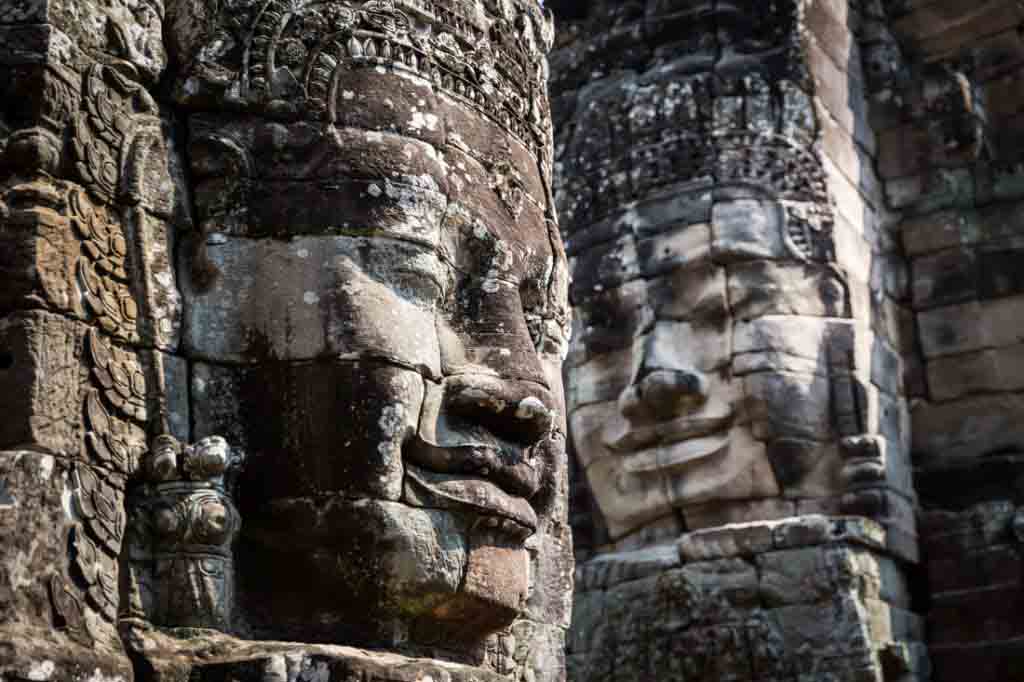
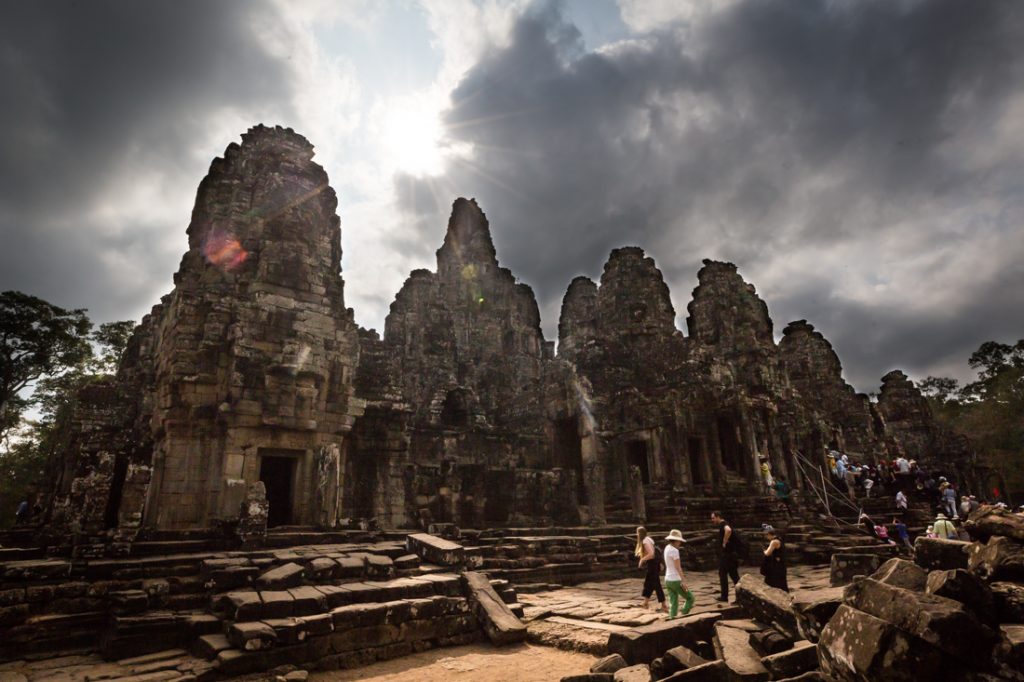
Take your time exploring all the individual chapels of Bayon, and get detail shots of the altars. Then make sure to walk around the entire complex, following the path that leads you past Baphuon and Prasat Preah Palilay. There’s a lot to discover back in the jungle behind Bayon. One of the most photogenic temples is Prasat Preah Palilay. While everyone around me converged on the center of Angkor Thom, I had Prasat Preah Palilay all to myself. Seriously, I was the only person there because no one else had bothered to walk the entire trail. You’ll find lots of undiscovered gems back in the woods, but beware the occasional vendors selling water for twice the price.
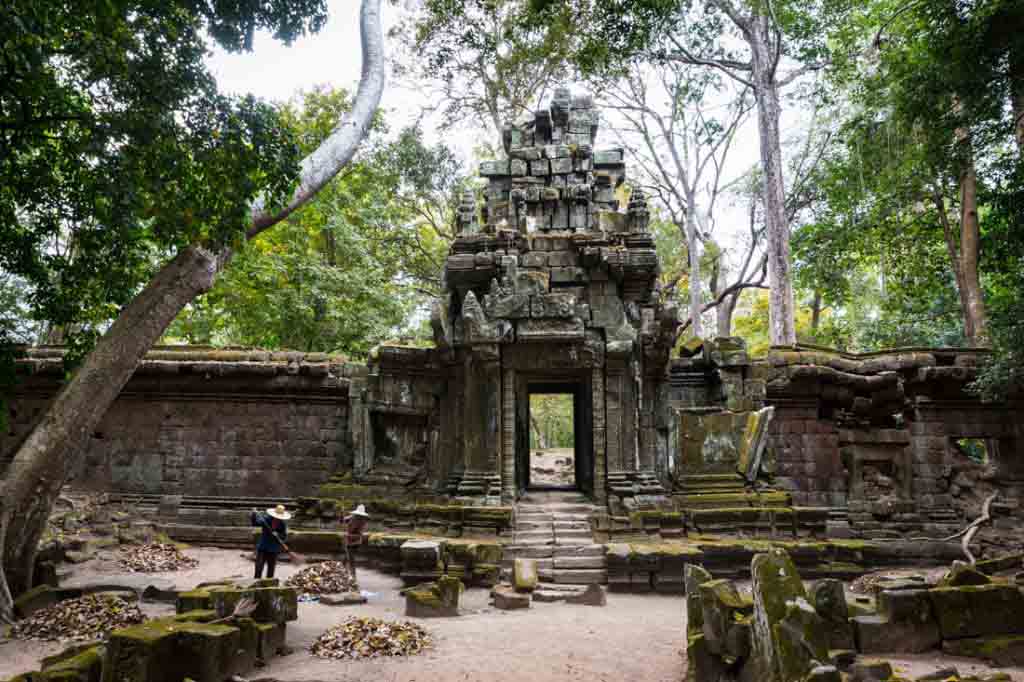

The Terrace of the Elephants is great to photograph, and make sure you go all the way to the end to the Terrace of the Lepper King to photograph the sunken sculptures. Here I spent about an hour photographing the details of each sculpture. The lines formed by the broken sculptures are fascinatingly abstract. Again, this area is neglected by most tourists so you will be free to photograph on your own. Plan to spend three to four hours at Angkor Thom, and go at sunrise.
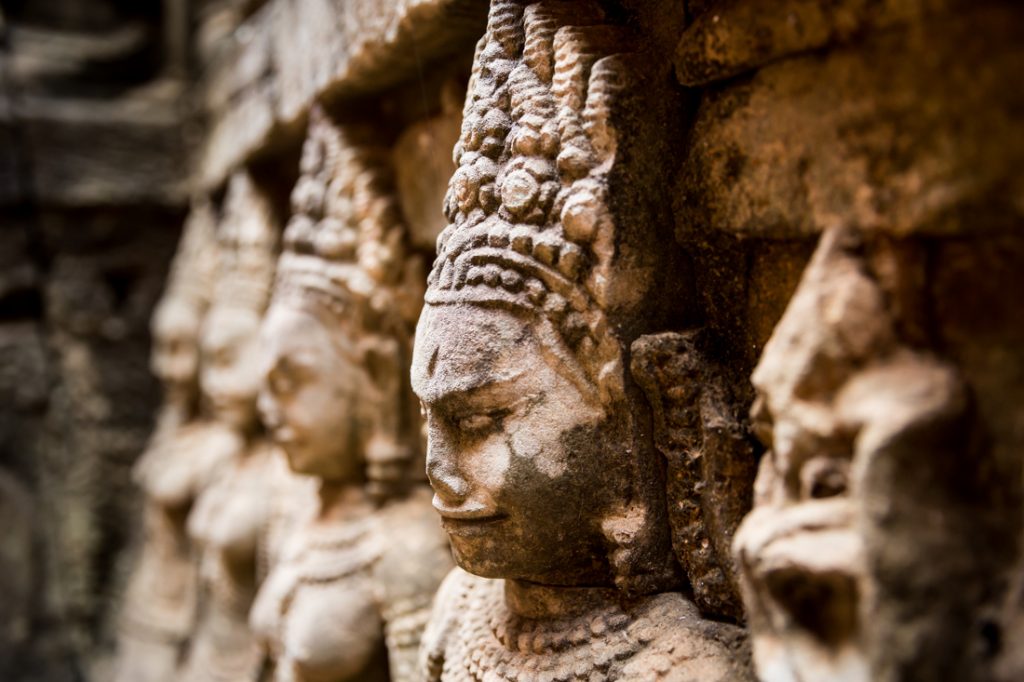
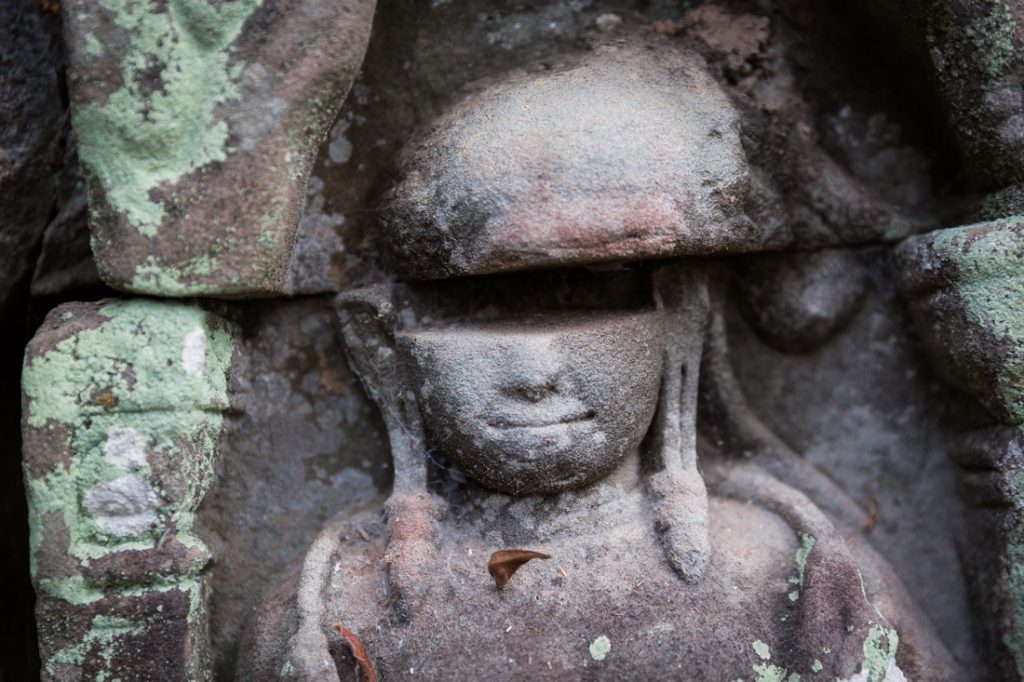
Angkor Thom
- Hours of operation: 5:00 a.m. to 5:30 p.m.
- Best time to visit: sunrise
- Amount of time to photograph: 5 hours
- Special things to photograph: Terrace of the Lepper King, Buddha statue with makeup at the west entrance, Prasat Preah Palilay
Victory Gate
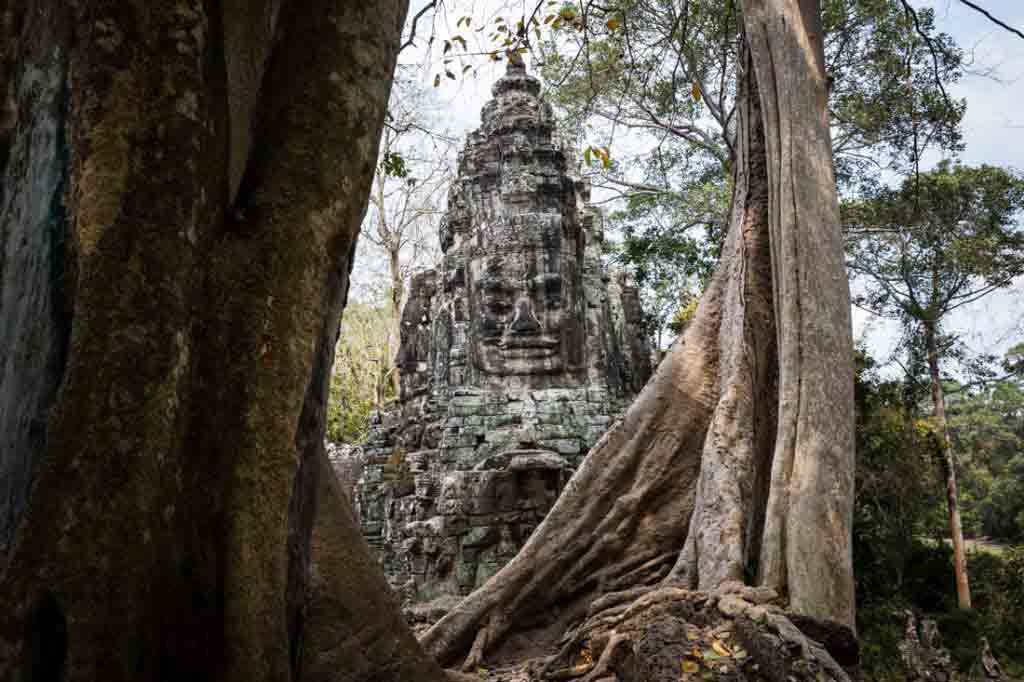
Looks can be deceiving. In the case of Angkor Thom’s Victory Gate, when I first passed through on my way towards Preah Khan, I thought the gate was interesting but…meh. There are other gates just like it on the south and north sides. It turns out that the more interesting view of this gate is from above.
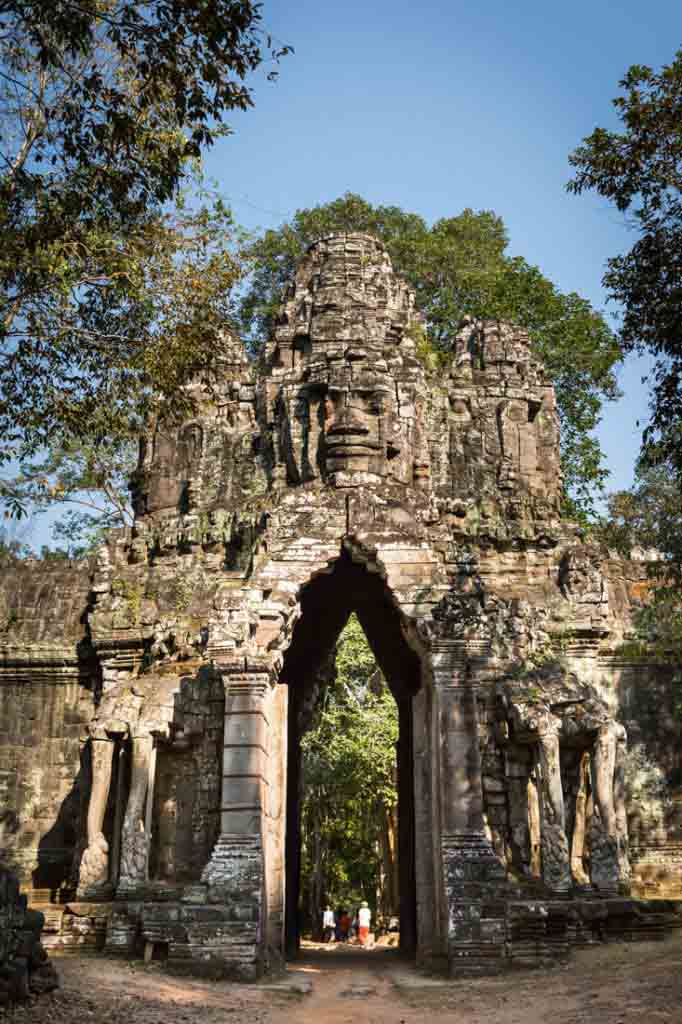
On my second trip to Angkor Thom, I saw a guide taking a group of visitors up to the top of the gate. Curious, I followed them. And this is what I found. The sculptures on top are more interesting thanks to the intertwining trees. In addition, it is a great shot to shoot down on the tuk tuks as they pass underneath the gate. It’s easy to clamber up either side of the gate, but I took the path on the right as you are looking from Bayon towards the path to Ta Nei. The Victory Gate doesn’t take that long to shoot, so expect to spend 40 minutes max.
Victory Gate, Angkor Thom
- Hours of operation: 5:00 a.m. to 5:30 p.m.
- Best time to visit: doesn’t matter
- Amount of time to photograph: 40 minutes
- Special things to photograph: view of the gate from the top
Thommanon and Chau Say Tevoda Temple

This temple complex has two sets of temples across the road from one another: on the north side of the road is Thommanon, and on the south side is Chau Say Tevoda Temple. I thought that Chau Say Tevoda Temple wasn’t quite as interesting, perhaps because at that point in my walk I was dog tired. Tired or no, there is not much that is striking about either of these temples. Both temples are on raised platforms, and to reach the inner chapels you will need to clamber up a set of stairs – something I was not in the mood to do.
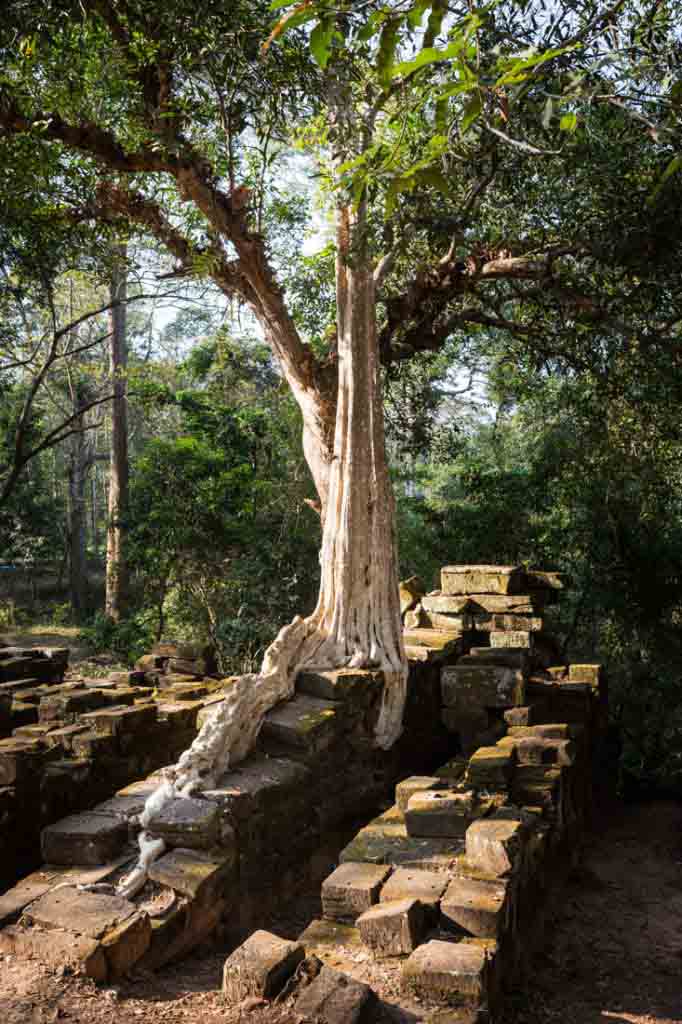
Both of these temples are pretty much covered over by trees, so the time of day you visit is irrelevant. However, if you visit the temples in the afternoon you can get some interesting light shining down on Thommanon. There is an eye-catching block of ruins overtaken by trees called Spean Thma, which you can find on the road between Angkor Thom and Thommanon. Bottom line: you don’t need to spend much time on these temples, and consider it a short stop on your way to Ta Nei.
Thommanon and Chau Say Tevoda Temple
- Hours of operation: 5:00 a.m. to 5:30 p.m.
- Best time to visit: sunset
- Amount of time to photograph: 30 minutes
- Special things to photograph: sun as it hits Thommanon
Srah Srang
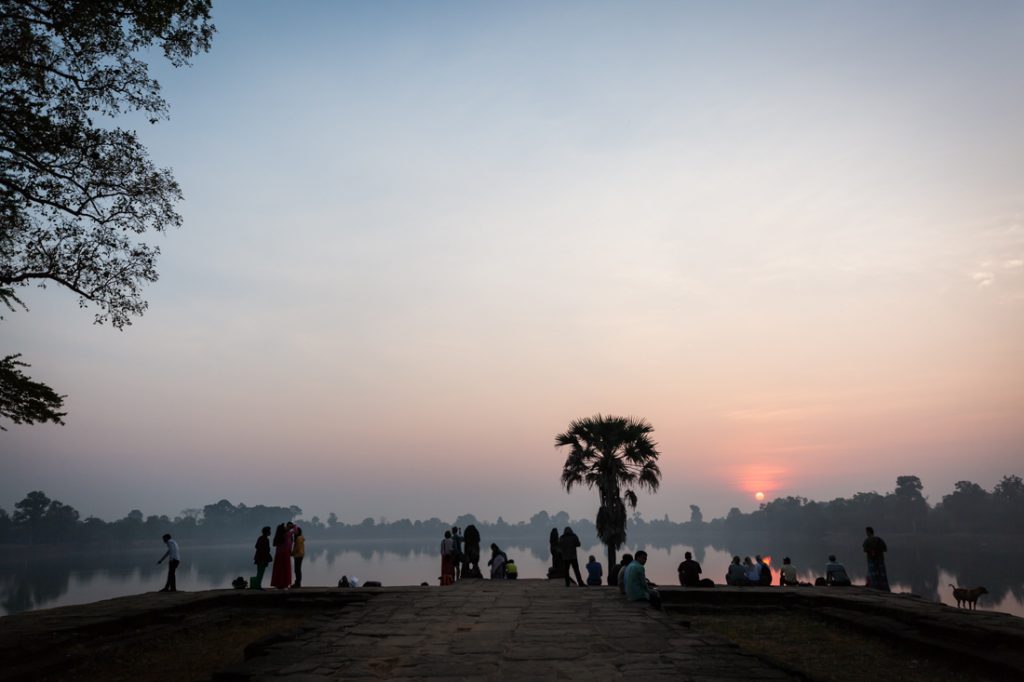
Though the sunrises during my visit to Siem Reap were lackluster overall, my best sunrise was photographed at Srah Srang. As opposed to Angkor Wat, there aren’t that many crowds at this temple. Visitors start arriving before dawn, so get there early. The area with stairs going into the lake is always overtaken with tourists first, but know that you have the entire side of the platform along the lake from which to take photos. While I was there, there were some local dogs roaming, and I made use of the trees hanging over the lake as well. Foreground beats background any day.
Srah Srang is basically a concrete platform overlooking a lake. There’s not much to the temple, so once you see the sun rise you can leave.
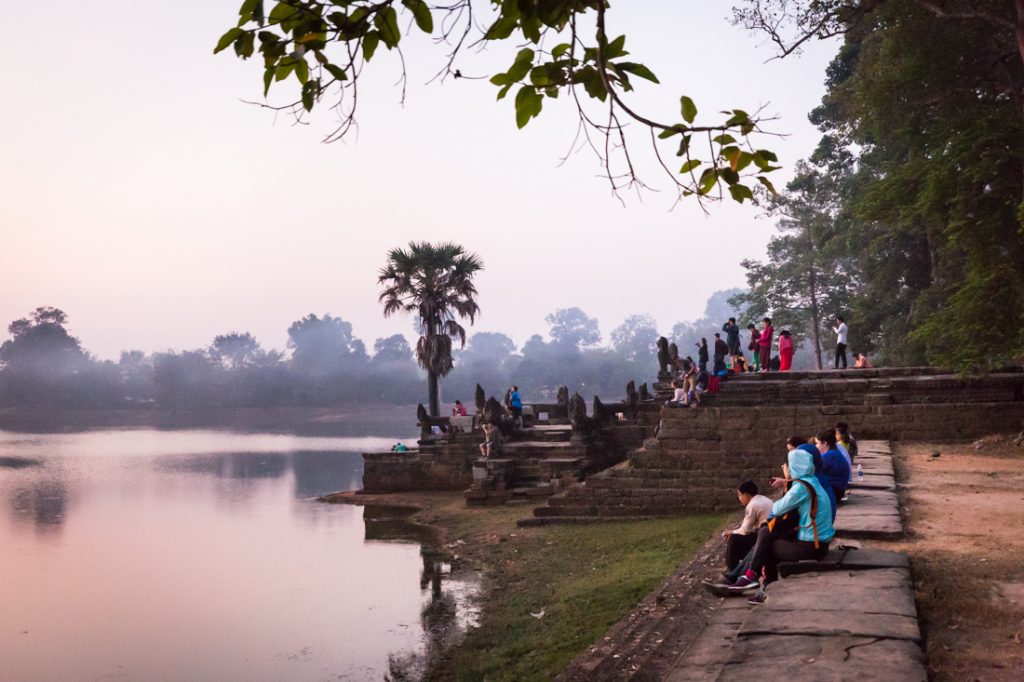

Srah Srang
- Hours of operation: 5:00 a.m. to 5:30 p.m.
- Best time to visit: sunrise
- Amount of time to photograph: 30 minutes (for sunrise)
- Special things to photograph: sunrise and that’s about it
Banteay Kdei

This small temple, located directly across from Srah Srang, was my favorite temple. What made it so delightful was the fact that Banteay Kdei was such a surprise. This temple is billed as a small, insignificant structure. In reality, it’s like a smaller version of Ta Prohm. I arrived at the temple right when it opened at 7:00 a.m. (A note about Angkor Wat opening hours: on various websites you will see the hours for all the temples listed as 5:00 a.m. to 5:30 p.m. That said, I could have sworn this temple and a few others opened much later.) As one of the first visitors through the gates, I pretty much had the entire place to myself. And that fact made the visit special. As opposed to the crowds at Ta Prohm, when you are alone and can experience the vine-covered ruins in the stillness of the morning, you can imagine what it was like for explorers who first chanced upon Angkor Wat.
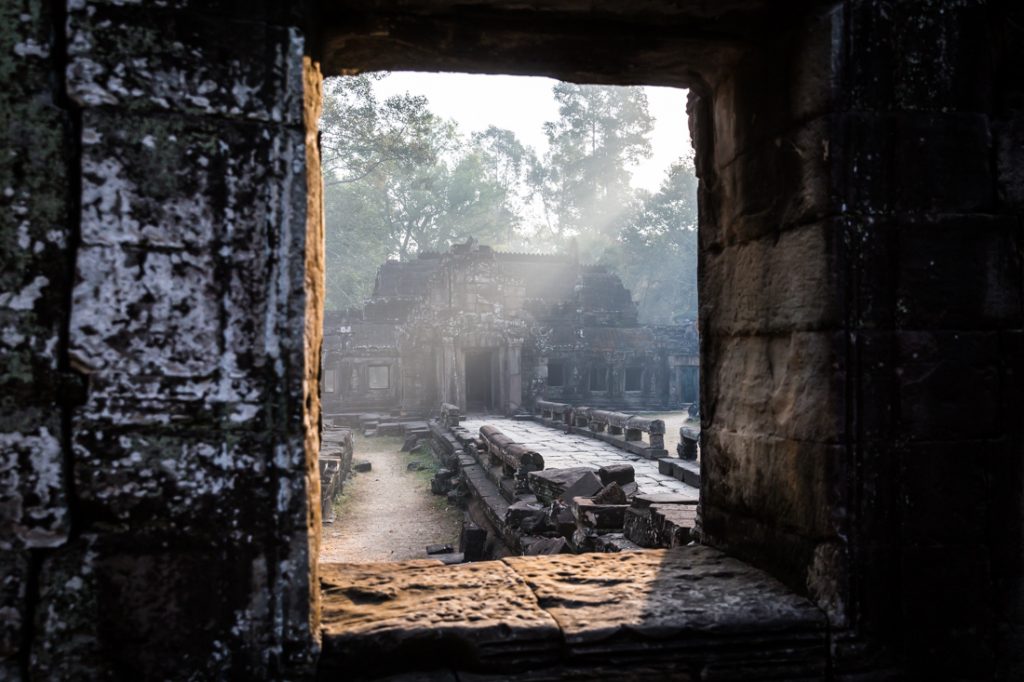
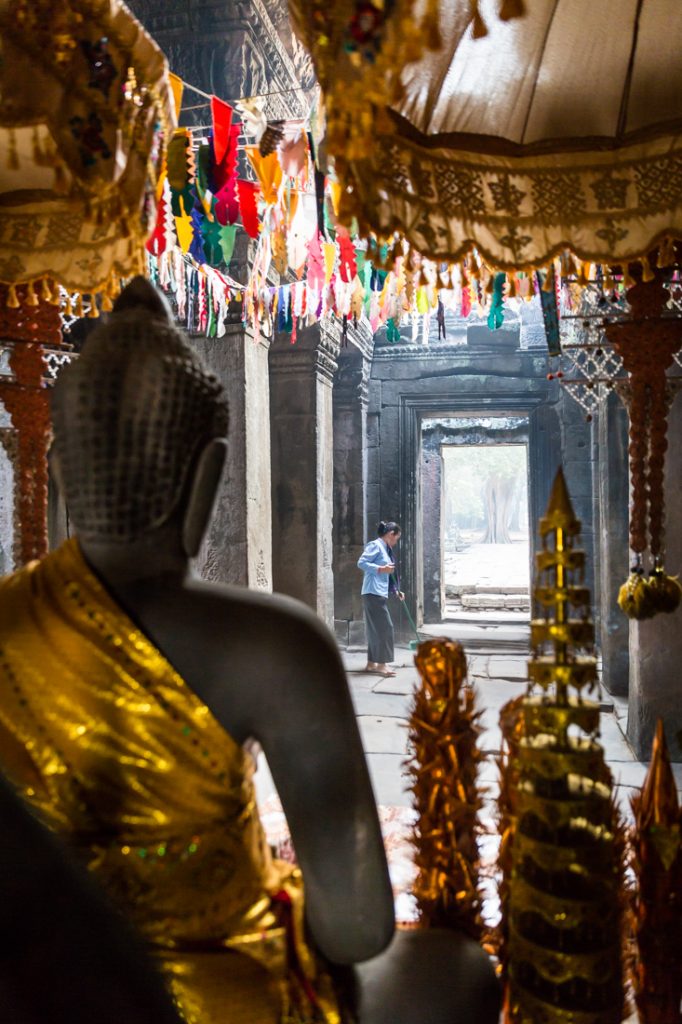

This temple is particularly good to photograph right after sunrise, and I got some great photos from the west side of the temple. Don’t forget to explore the smaller temple in the front of the main temple. This building is largely empty, but there are some moss-covered stones that are great for close-up shots. You can easily photograph this temple in two hours or less. My recommendation is to get there in the morning when the light is the most beautiful. After you get done photographing Banteay Kdei, I recommend walking over to the Rohal Village for street photography opportunities.
Banteay Kdei
- Hours of operation: 5:00 a.m. to 5:30 p.m.
- Best time to visit: sunrise
- Amount of time to photograph: 1 hour
- Special things to photograph: view of the temple from the back entrance
Ta Prohm
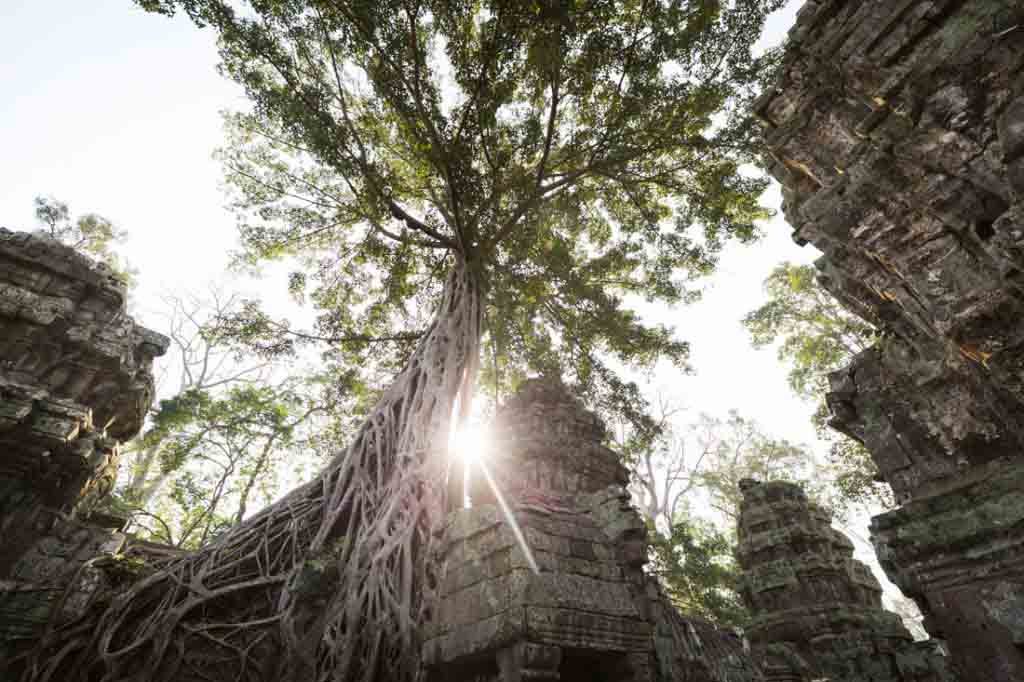
Known as the Tomb Raider temple, I found Ta Prohm to be a bit underwhelming. Sure, it had some great vine-covered moments, and finding the face in the vine was a wonderful surprise, but somehow I just imagined there would be… more. I visited Ta Prohm twice during my week in Siem Reap. On my first visit, I arrived mid-morning after my visit to Banteay Kdei. By that time, the crowds were out in full force. (Did I mention I visited Siem Reap during Chinese new year?) I could barely see parts of the temple for all of the tourists in front of me, so of course, they became the subject of most of my photos at Ta Prohm that day. If you are looking to have moments alone with the vine-covered doorways, think again. The throngs of visitors to Ta Prohm make it impossible to get a wide sweeping photo without including a few of them in the frame.

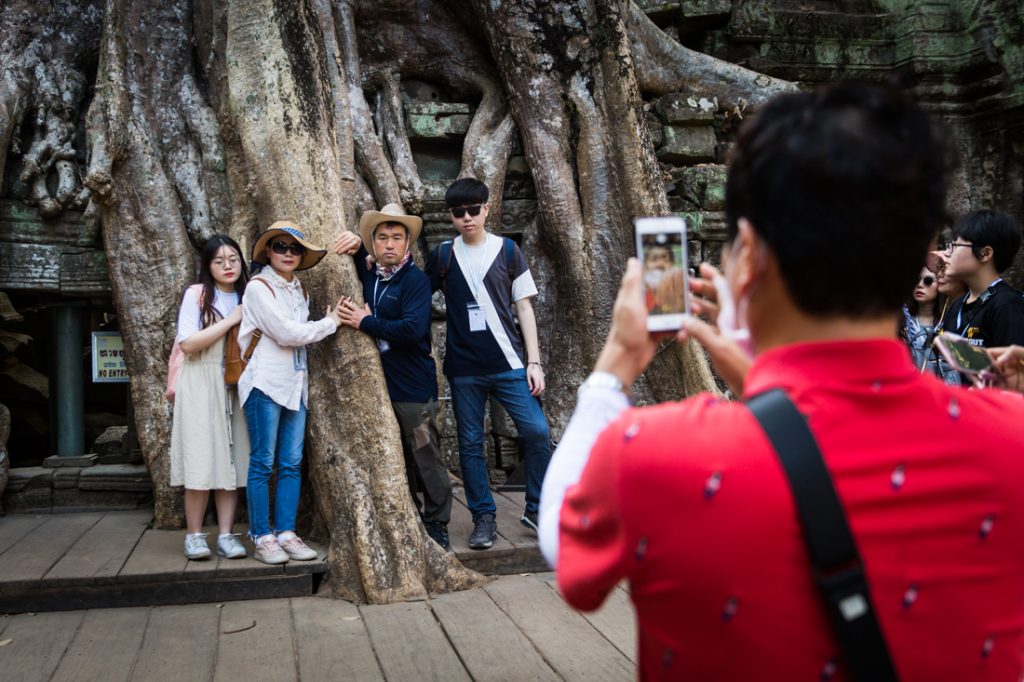
Furthermore, you should know that this temple is getting a thorough makeover. There are boardwalks being put down and stanchions inconveniently placed right in front of the areas you want to photograph. There is also major construction happening at the temple. The construction workers were actually interesting, and you can see them hand-carving the stone to replace the ruins. But construction also means that parts of the temple are off-limits, and of course, that leads to more crowding.
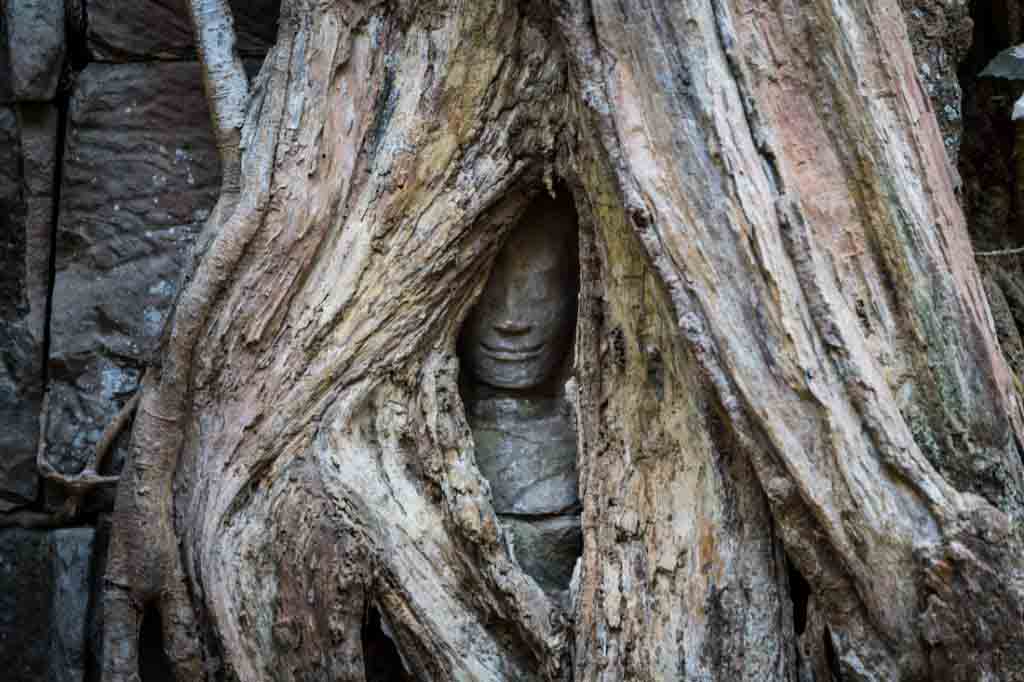
Don’t get me wrong – you can in fact get some great photos at Ta Prohm. My second visit to the temple was on another day in the afternoon, and it was a much more successful event mainly because the crowds had abated somewhat. In addition, this is when I met the ‘face.’ Purely by chance, I heard another tourist mention something about a ‘face in the vine.’ I had done some basic research on Ta Prohm, but had never heard of this or even seen a photo. I frantically tried to Google the ‘face’ online, but couldn’t get wifi. Instead, I followed a tour group. The face is located within the main temple as you enter the labyrinth. Once you find the main colonnade, immediately look to the ruins beyond the columns and you will see a small face entwined by vines poking out from the bottom. You have to know where the face is located, because there are no signs anywhere. The whole trick is that the temple wants you to hire a guide. The face is a beautiful site, but it can’t hold a candle to the Buddha head wrapped in a tree root that you in Ayutthaya, Thailand. (I’ll have details on that photo down the road!)

My recommendation is that you spend a lot of time at this temple, simply because you will need to wait for tourists to get out of your shot line. Each time I visited Ta Prohm, I spent two to three hours there. In terms of the best time of day, it didn’t seem to really matter. The best photos I took at Ta Prohm were located along the outside wall of the temple. The tourists seem to concentrate within the main structure and completely forget that the outskirts of the temple have the best vine-covered ruins.
Ta Prohm
- Hours of operation: 5:00 a.m. to 5:30 p.m.
- Best time to visit: anytime to avoid the crowds
- Amount of time to photograph: 5 hours
- Special things to photograph: face in the vine, vine-covered walls surrounding the temples, tourists
Pre Rup

Not my favorite temple, at all. Pre Rup’s claim to fame is that it is the perfect setting for sunset. And yes, that is true. But this is a fact that everyone knows, and the resulting crowds are massive. On the day I visited, I got there way ahead of time. I actually arrived too early because I spent a lot of time sitting around at the top of the temple playing Pokémon and waiting for the sun to set. There’s not much to photograph at this temple to warrant an extensive amount of time. There aren’t many detail shots to take, and the area surrounding the temple is just countryside.

In terms of crowd control, the platform where everyone faces the setting sun is relatively small. As a result, unless you feel brave enough to dangle your legs off the edge of the platform, you are going to be standing for a long time in the middle of the crowd. Long story short, I was tired and before the sun officially set I climbed down off the top of the temple to meet my driver. I may have officially missed the sunset, but I did get a great shot of the crowds at the top by walking away from the temple and turning my camera on them. Visit Pre Rup to say you’ve been, and I pray you have a better sunset then I did when you visit.
Pre Rup
- Hours of operation: 5:00 a.m. to 5:30 p.m.
- Best time to visit: sunset
- Amount of time to photograph: 30 minutes (for sunset)
- Special things to photograph: the sun setting, that’s it
Preah Khan

Second only to Banteay Kdei in my list of favorite temples, Preah Khan should be at the top of your list for ‘must photograph’ temples. I visited the temple twice, and the first time was my best visit. After stumbling around in the woods for an hour walking from Angkor Wat, I arrived at the back entrance to Preah Kahn. It was at the end of the day, and the sun was setting. There were very few visitors, except a small group of French tourists, and I pretty much had the entire place to myself. The flowers had been freshly placed on the altars, and I got some beautiful shots of light streaming in through the doorways.

I came back to the temple on a different day in the morning. The temple was crowded, and it didn’t have the same magical light as it did on my first visit. Note that this is a rather large temple with two main entrances. When I came the second time, I actually got lost and forgot which entrance at which I was supposed to meet my driver. What most people do is enter through one entrance, and exit the other in order to meet their driver. It took me a good half hour before I finally found the right exit.
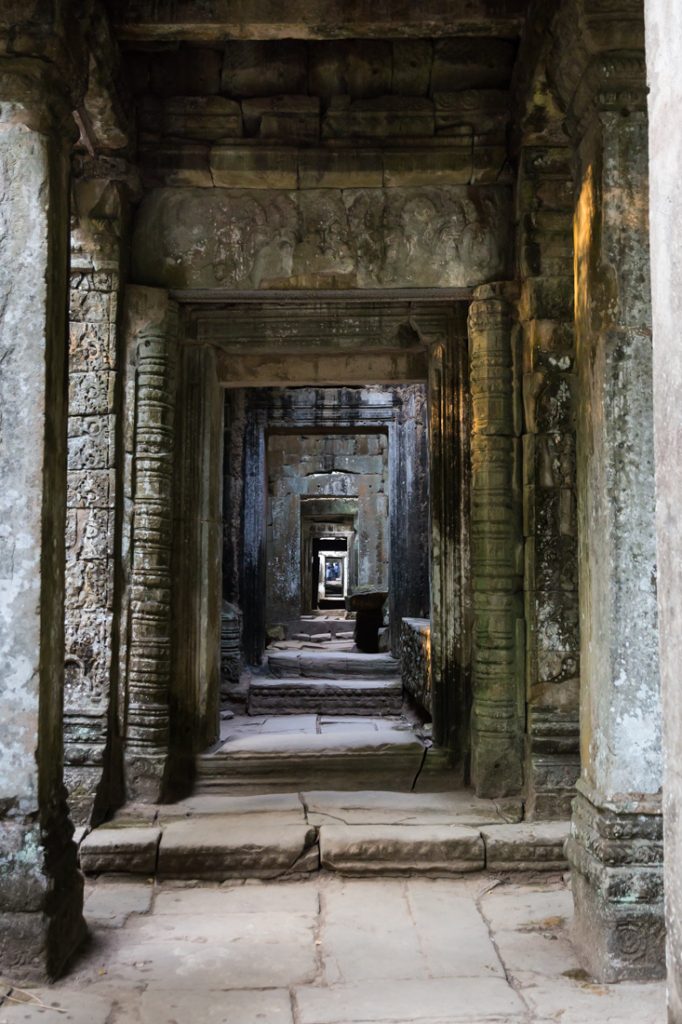
Preah Khan
- Hours of operation: 5:00 a.m. to 5:30 p.m.
- Best time to visit: sunset
- Amount of time to photograph: 3 hours
- Special things to photograph: light streaming in through doorways, back exit
Neak Pean and Jayatataka
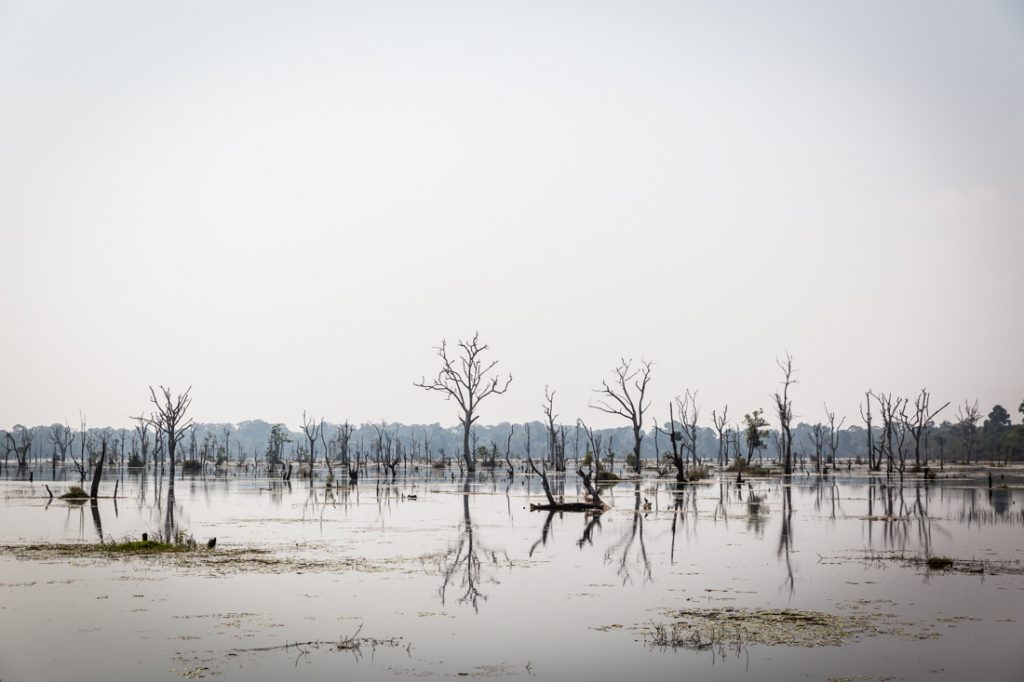
When you hear ‘temple in the middle of a lake,’ you get really excited like I do, yes? I was so enthusiastic about visiting this temple. I hadn’t seen many photos of it, but I knew there was an underwater forest surrounding the temple, and that just sounds magical. Well, the reality is that this temple complex was disappointing. Yes, there is a small temple in the middle of a lake, but no, you can’t actually get to the temple itself. In fact the ‘lake’ is more like a pond. The body of water surrounding the temple is stagnant, and not that pleasant to look at. On either side of the main temple you will find chapels with offerings inside that I found more interesting. Also, wild chickens roam the grounds, which I always find fascinating. I have a thing for fowl in other countries.

The underwater forest is interesting, but I would suggest you go at a time when the sun is either setting or rising. I couldn’t adjust my timing on the day I visited, and thus I was there when the sun was high overhead. The resulting photos look washed out to me. You should definitely visit the temple, especially since it is so close to Preah Kahn, but you don’t need to spend much time here.
Neak Pean and Jayatataka
- Hours of operation: 5:00 a.m. to 5:30 p.m.
- Best time to visit: sunrise or sunset
- Amount of time to photograph: 40 minutes
- Special things to photograph: underwater forest, chickens
Ta Som

This temple is interesting only because of the vine-covered doorway located at the back of the temple. It is a beautiful doorway, but that’s it. The rest of the temple is meh. Also, there are tons of children selling things by the intricate doorway. Those kids know where their audience will be. Get in; take a photo of the doorway, and then get out quickly.
Ta Som
- Hours of operation: 5:00 a.m. to 5:30 p.m.
- Best time to visit: doesn’t matter
- Amount of time to photograph: 30 minutes
- Special things to photograph: intricate doorway in the back of the temple
Ta Nei

For me, the best part of Ta Nei was the adventure it took to get here. My first visit to Ta Nei was the epic day I walked from Angkor Wat, to Angkor Thom, then to Ta Nei, and finally ended up at Preah Kahn. I was really tired when I arrived at this temple, and you should know that there is not much to the complex. The temple grounds are largely a bunch of ruins, with very few standing structures. The temple is entirely covered by trees, so it does not matter what time you visit the temple. I will say that on my second visit to the temple I liked it a lot more, and got some detail shots of the buildings.
I found the security guards at the temple to be absolutely useless. They were no help in giving me directions. I found on my own, however, a lovely trail in the back of Ta Nei that eventually led me to the Preah Kahn temple. I put my GPS to the full test, and for the longest time I thought I was going to be lost forever in the Cambodian woods. After about an hour walk, however, I emerged out of the wilderness to the sounds of monks chanting at the Preah Kahn temple. I did make it, and in hindsight it was a great hike, but know ahead of time that the path is not well marked at all.
Ta Nei
- Hours of operation: 5:00 a.m. to 5:30 p.m.
- Best time to visit: doesn’t matter
- Amount of time to photograph: 1 hour
- Special things to photograph: details of the ruins
Ta Keo
When I was in Siem Reap, this temple was closed for renovations. Honestly, I was a bit templed out at that point, but the structure didn’t strike me as being unique in anyway. Don’t waste much time on this temple as you pass by it on your way to Ta Nei.
Ta Keo
- Hours of operation: 5:00 a.m. to 5:30 p.m.
- Best time to visit: doesn’t matter
- Amount of time to photograph: zero
- Special things to photograph: nothing3
Finally, I don’t have any photos of East Mebon or Prasat Kravan. That should tell you all you need to know.
Conclusion
With few exceptions – Preah Khan at sunset, Angkor Wat at sunrise, the faces of Bayon, or the details of the Terrace of the Lepper King – most of the Angkor Wat temples look alike. Or I should say, they will start to look alike after you are there for seven days. I know it is sacrilegious to say that, but I found that the key to taking an outstanding photo was my total experience with the temple. Banteay Kdei was my favorite temple not because it had the most beautiful carvings, but because I was there practically alone soaking in the ambience all around me. In comparison, the thrill of Ta Prohm was missing because the tourists around me had sucked all the excitement out of the space.
Aside from having the proper equipment and hitting each temple either early in the morning or late in the day, the way to take the best photos in Angkor Wat boils down to your ability to manage the crowds. Give yourself enough time so that you can visit the temples on multiple occasions and at different times of the day. Always be looking for three different views – wide, mid-range, and details – for each temple, and don’t forget that the most interesting shot may not be of the actual temple, but on the people behind the scenes.
_______________________________________
If you found this ‘Angkor Wat Temple Guide’ interesting, then check out some of my other recent posts:
Any recommendations for my next road trip? Drop me a line and let me know where I should head next.
To view more images from my travel and photojournalism portfolio, please visit my website – Kelly-Williams.com
